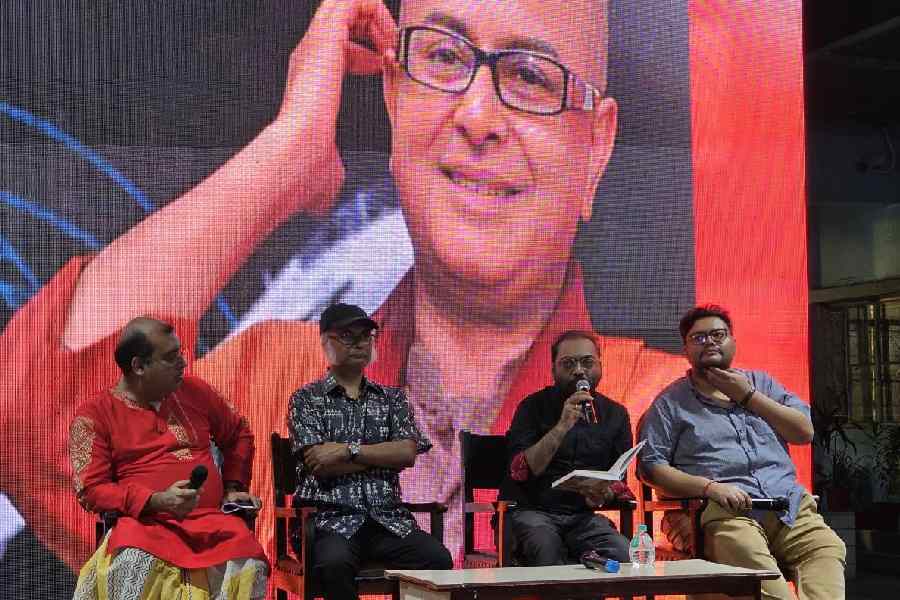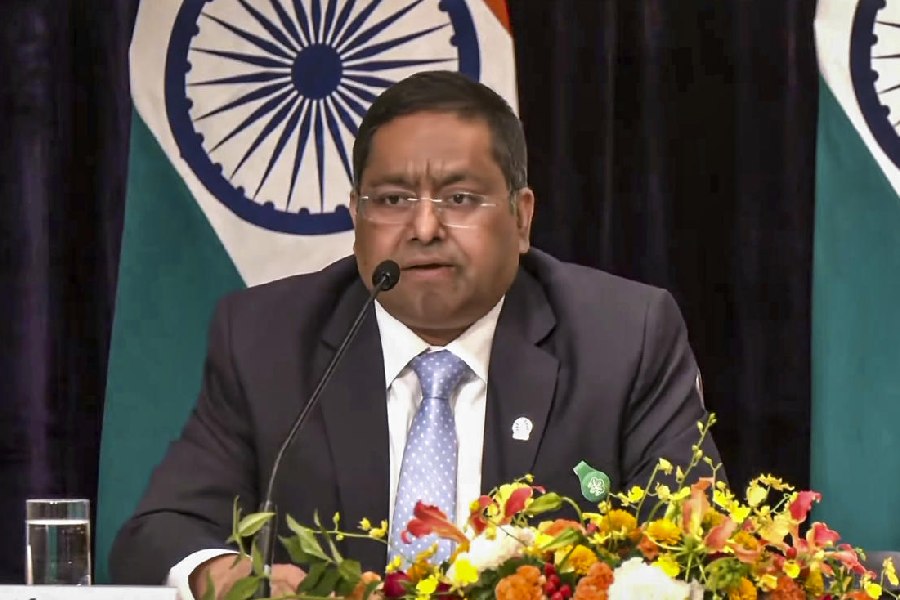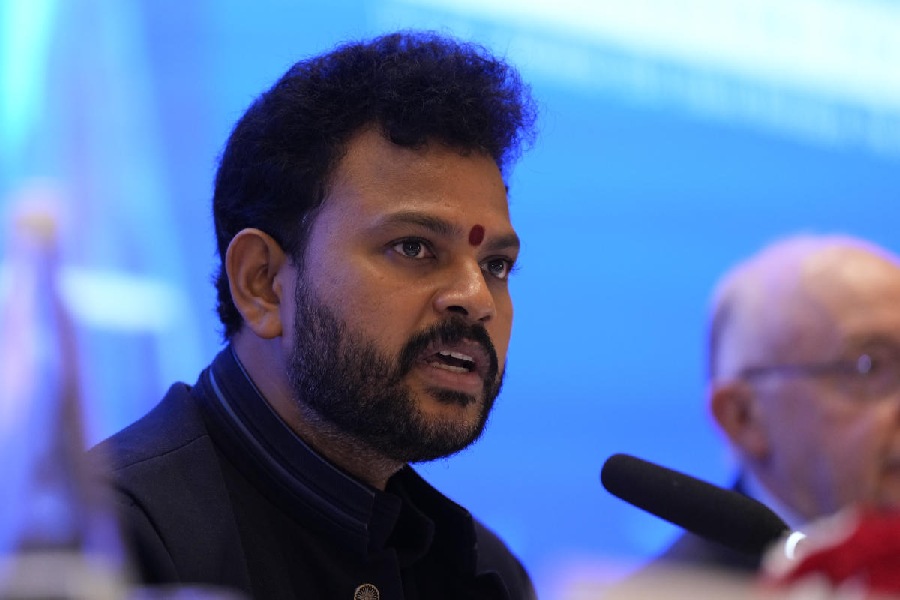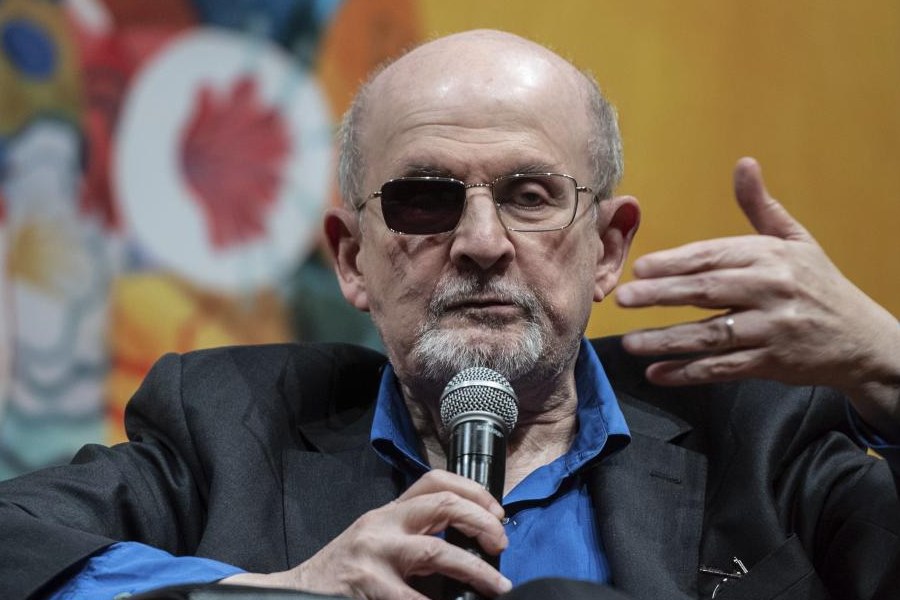Moon Moon Sen to the Nepali gatekeeper, Rituparno Ghosh could mimic everybody. He could give a mouthful if he got irritated but if he really got angry, he would simply clam up. Memories, both personal and professional, of colleagues and schoolmates, brought the deceased filmmaker back to the school, which he had passed out of in 1976 as part of the first batch of Madhyamik examinees, recently at a Borshobaran adda organised at South Point School.
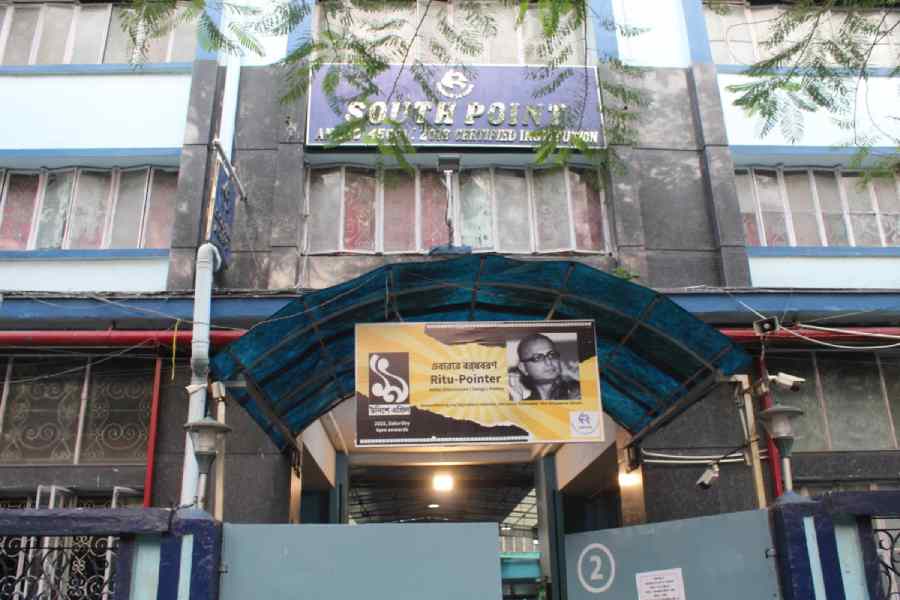
A banner announcing the programme hangs over the entrance to South Point School
The Association of South Point Ex Students (Aspexs) has been holding a Baisakhi meet-up for nearly a decade. “The day chosen is usually the first Saturday immediately after Poila Baisakh. This time we realised that the date would be April 19, or in Bengali unishe April, which is also the title of a landmark film of our alumnus Rituparno Ghosh. Though the evening is usually reserved for musical performances by our old boys and girls, we decided to pay tribute to Rituparno this year. This is the first time the occasion is dedicated to one person. The response to the programme — titled Ritu-Pointer — was so enthusiastic that we decided to hold this in the school courtyard instead of the top-floor auditorium to accommodate more people. The audience count was double last time’s attendance. Even ex-teachers came in higher numbers than usual,” said Meghnath Roy Chowdhury, honorary secretary of Aspexs.
On stage were three panelists — Rituparno’s editor Arghyakamal Mitra and filmmaker Pratim D. Gupta, both ex-Pointers, and another close Rituparno associate Anindya Chattopadhyay — along with the moderator and alumnus Santanu Mukherjee.
Mitra was two years junior to Rituparno at South Point. The director, said Mitra, never entered his editing room after the first few films, nor did he give a briefing. “He read out the script so well that everyone got the idea about his vision. There would be a telephone conversation afterwards. I would edit a bit and take the transfer on a disc for him to watch at home and comment. He was very flexible and did not mind deviating from his own script, if needed,” said the editor of 18 of his films, from Dahan in 1997 to Satyanweshi that he left incomplete.
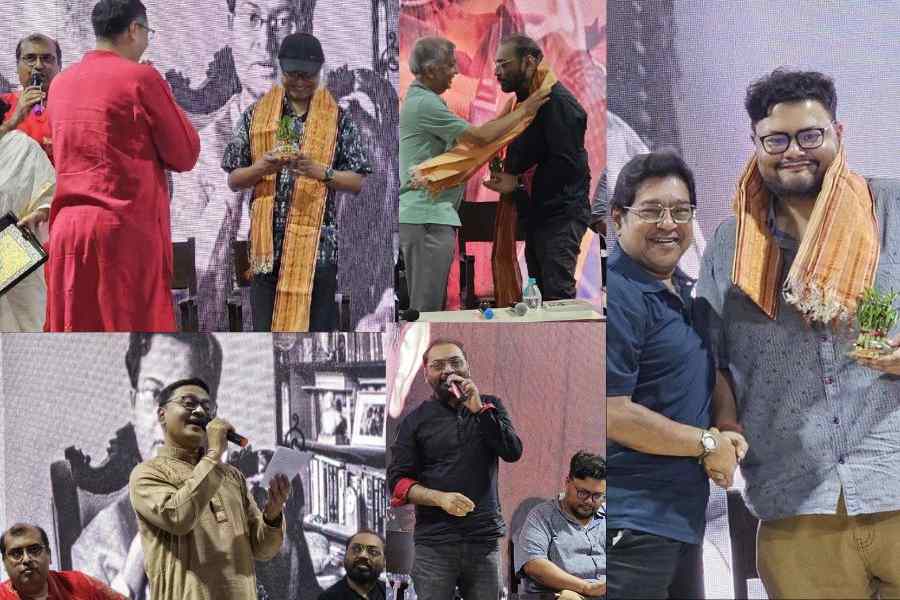
(Clockwise from left) Aspexs honorary secretary Meghnath Roy Chowdhury greets Arghyakamal Mitra, Sandip Roy Choudhury, treasurer of Aspexs, welcomes Anindya Chatterjee, Ex-Pointer Pratim D. Gupta being greeted by Aspexs committee member Avijit Mitra, Anindya Chattopadhyay on song and Sibashish Dutta, of the Class of Madhyamik 1981, sings Megh peoner bag-er bhetor
One such example of flexibility was the film Abohoman, on which post-production carried on for a long time. “One day he told me that the film seemed very bland from the point of Titoda (Dipankar De)’s memory loss. An idea struck both of us. There would be no visuals in that scene, only audio. Ritu asked me to go ahead. If the effect was good, we might use it elsewhere in the film, it was decided,” he recalled.
Anindya knew Rituparno from his time at a private TV channel and recalled being asked to work as an assistant director in Titli. “I was actually an observer on the sets. I hardly did anything. I had a walk-on role in the film, which I did with the seriousness of Patalbabu (in Patalbabu Filmstar, Satyajit Ray’s short story).”
Anindya played a substantial role in Subho Mahurat, his very next project. “Seeing me hesitate when he made the offer, Rituda told me that I would be acting opposite Nandita Das.” The role too, Anindya realised, was written with a lot of sympathy. “I am not as gentle and well-mannered as was my character. Bondhura dekhe khub heshechhilo.”
Though Subho Mahurat is a whodunnit, Anindya said he never thought of it as one while filming. “When I heard the script, I had not read Christie’s story. The mystery was not as interesting as the character of Ranga Pishima and her relationship with her niece, their banter. Nor did I understand it while shooting,” Anindya said, adding. “That’s also because actors never get to understand the film beyond the scene they are acting in.” The death scene of Kalyani Mondal in the film grabbed eyeballs. “She passes urine when she falls. It was a shocking scene, the like of which was unseen in Bengali cinema,” he said.
Anindya also pointed out that Rituparno had deviated from the original Agatha Christie story. Unlike Christie’s A Mirror Crack’d, the culprit is not handed over to the law. “In Rituda’s films, there is always a realisation, an upliftment at the end.”
Pratim spoke of the detailing of Rituparno’s sets. “Rituda had trunks of props to decorate a scene with. Where most art directors would be content to keep tomato ketchup, salt and pepper on a dining table, Rituda would also bring acharer bottle and Jhorna ghee. No one did detailing like Rituda. In his chamber drama films — Utsav took place in four rooms, Raincoat was in a single house — he would plan every square inch.”
Pratim also spoke of Rituparno’s mastery in creating high drama through dialogue and acting. “I am lucky to have written a script alongside Rituda. It was then called Anya Nayok, which Kaushikda (Ganguly) later made a film out of, titled Jyesthoputra. In Anya Nayok, a superstar returns to his village home after his father’s death. His childhood friend, who has now married, is making his bed. He asks her: Tor bachchha kemon achhe? She responds: ‘Chhele na meye bhule gyachho, tai bachchha bolle?’ Rituda wrote this line and looked at me, saying: ‘This is Rituparno Ghosh. Eta tui aar kothao pabi na.’ He could pass on so much information about a relationship and the history of it just through a single line of dialogue! He had an incredible power of observation and it showed in his scripts.”
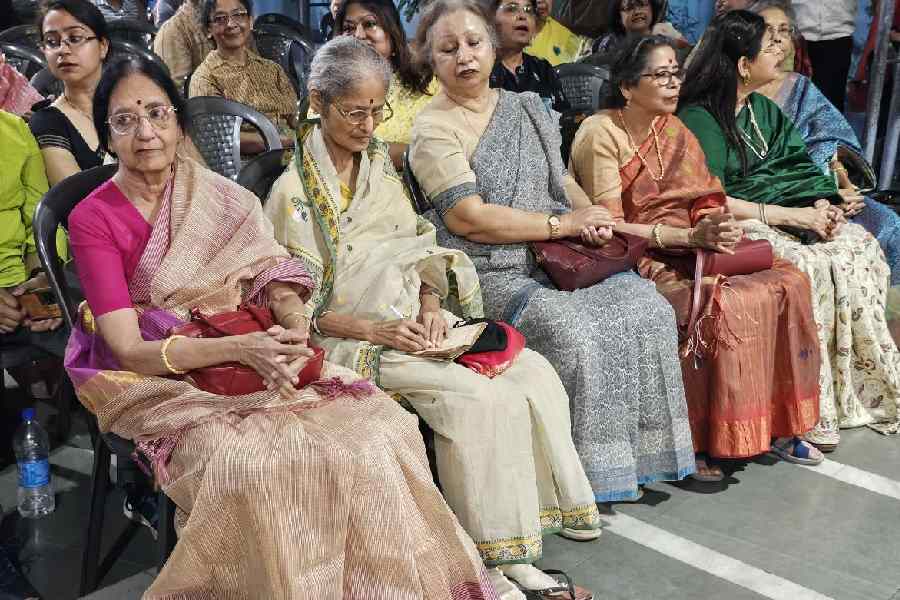
Retired teachers watch the programme
A montage of still photographs, created by ex-Pointer Utsav Dan, provided a backdrop to the discussion. The evening, which also saw the launch of the Aspexs Cultural Group and a continuing medical education seminar by Aspexs Medics, ended with a treat of snacks from the school canteen.

